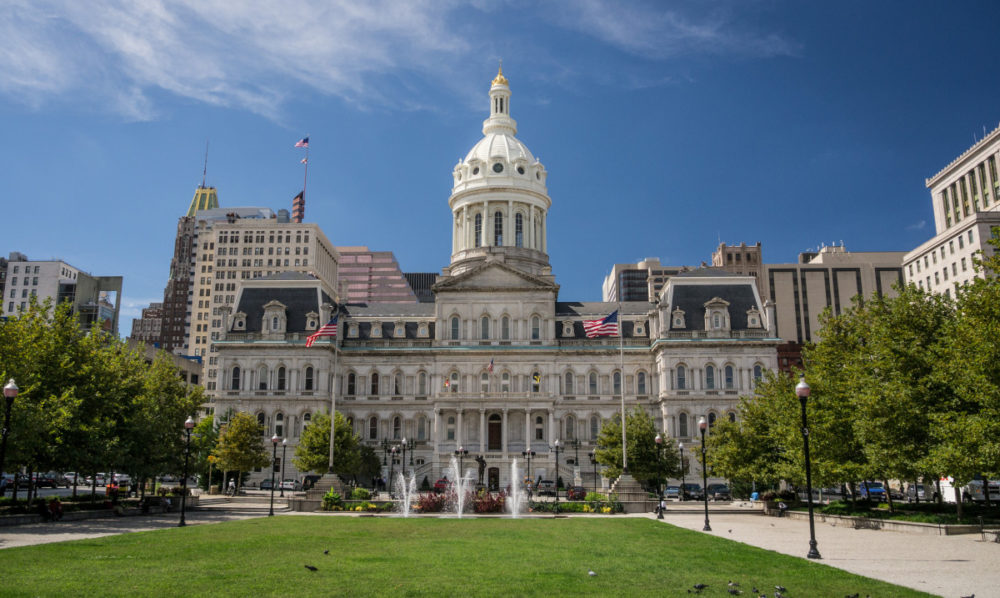The Infrastructure Investment and Jobs Act, commonly called the Bipartisan Infrastructure Law, will provide massive opportunities for local and state organizations across the country. The act provides over $500 billion in federal funding to improve roads and bridges; strengthen energy, power and water infrastructure; and expand broadband internet access.
Of this, $2.75 billion will be distributed to states through Digital Equity Act programs that aim to ensure all residents have the skills and capacity to engage in the digital economy. This is a once-in-a-generation investment that can help Baltimore in profound ways by providing resources to address infrastructure at the local level. We cannot miss out!
A compelling application for digital equity funds will require community engagement. The digital inclusion programs are intended to lay the groundwork for sustainable economic growth, as well as improved education, public safety and healthcare. Establishing local and state priorities, not to mention designing programmatic strategies that reach our most vulnerable communities, will require listening directly to Baltimore residents and taking action based on their recommendations.
Now is the time for Baltimore to build a meaningful public engagement process.
At the Robert W. Deutsch Foundation, we believe this includes establishing a “commission” with local and national experts charged with building a public record, on behalf of the mayor, to inform the city’s digital equity priorities. With a focus on critical areas like telehealth, workforce development, the creative economy and consumer protections, public hearings in each City Council district would offer a powerful mechanism to elevate high-impact opportunities. They would also generate positive media attention and inform Maryland’s Broadband Plan, ensuring Baltimore gets its fair share of the funding.
In my own work, I have witnessed the power of the public process time and time again. In fact, during the fight to preserve net neutrality, public town halls — hosted with Federal Communications Commission members and local elected officials — played a critical role. I helped to organize town halls in Oakland, Minneapolis, Albuquerque and Appalachia. In each, community partners worked together to shape the agenda, lead turnout and help their members prepare testimony. Meanwhile, local media — especially ethnic media — ensured coverage, livestreaming the events online and using community radio and public television. During the events, hundreds of individuals waited in line to share 3-minute statements about the importance of the internet and strong net neutrality rules. These events, with their diverse grassroots and community-based participation (in terms of age, race/ethnicity, gender, ability, language and economic status) re-shaped the fight for net neutrality, elevating the voices of everyday people. We can and should consider a similar process in Baltimore.
Of course, detractors and foot-draggers will surface, arguing that “we don’t have enough time” or “the process is too cumbersome.” Others will point to a handful of leaders, arguing they are the “voice for the voiceless.”
But, as the writer Arundhati Roy says, “There’s really no such thing as the ‘voiceless.’ There are only the deliberately silenced, or the preferably unheard.”
We can do better. We must.
Our Digital Equity Leadership Lab provides a small window into the city’s untapped potential. In each cohort, we meet approximately 25 neighborhood and community leaders whose valuable expertise and perspective should shape city strategy. And yet, most have never been invited to engineer solutions to the digital divide, let alone weigh in on priorities. If these and other residents had a public process, we’d likely receive affirmation on what we already know: Speeds are slow, prices are high and not all zip codes are served equitably.
However, we might also hear about security and surveillance concerns for migrants and returning citizens, truth in advertising issues for seniors, what ISP competition looks like at the neighborhood level, the true bandwidth requirements for artists and entrepreneurs and the need to protect good jobs for union telecom workers from outsourcing.
This is exactly what we need to know to shape the city and state’s broadband strategies, as well as ensure that the Bipartisan Infrastructure Law is fully actualized. The internet is the most important technology of our lifetime. We cannot afford to continue creating solutions without the most critical voices at the center: the people who need the opportunities it can create and who, when given a platform, are most likely to design a future that benefits us all.







